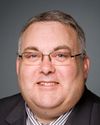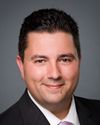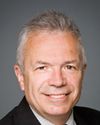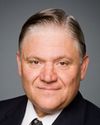Thank you, Mr. Chair.
The Federal Electoral Boundaries Commission has had a very challenging task, and I sincerely appreciate the work that the commission has done to consider and support the concerns of the constituents of Scarborough—Rouge River and residents across Scarborough.
As a member of Parliament, I believe it is my role to listen to the people I represent and to be the aggregate voice for the community. I did just that by engaging in a public consultation process when it was made available by the commission. Many Scarborough—Rouge River and other Scarborough residents did also, and I'm pleased that the commission heard their concerns as well.
The commission's initial proposal split Malvern and Morningside Heights, two vital communities within the riding of Scarborough—Rouge River. This proposal prompted considerable concern, not only from individuals in those areas, but also from people all across Scarborough.
Malvern and Morningside Heights are two communities of great interest, and they enjoy a mutually beneficial and extremely positive relationship.
When the electoral boundaries commission presented the first map, constituents from across the riding contacted me to share their feedback and ideas. Approximately 25 residents took time off work to attend the public hearings. Almost 10 more wrote submissions to the commission.
Residents are extremely grateful to the commission for listening to their concerns and for creating this new map that keeps communities of interest intact and provides fair representation for Scarborough.
In the public hearing, the commission heard that Malvern is a vibrant and diverse community of interest. However, it is also a community that experiences challenges with poverty, crime, and gun violence. Sadly, residents were shocked by two shootings just this past weekend.
As a result of the disproportionate concentration of poverty and violence in Malvern, the City of Toronto identified it as one of 13 priority neighbourhoods.
Community activists, youth workers, and local representatives have been working for decades to build a sense of community and continue to fight for funding for community support, services and programs to engage youth and create a safer community. In turn, the excellent work and efforts that residents, community agencies, and service providers have accomplished to build this community would be eroded if it were split in half as per the original proposal.
In Malvern there's a community health centre, a recreation centre, high schools, shopping centres, and a major public library, all accessible to the residents of Morningside Heights directly to its north.
Moreover, many agencies have service centres on both sides of Neilson Road, the previous westerly boundary, which would certainly create confusion among residents as well as creating funding challenges for service providers.
Furthermore, Malvern and the communities south of the 401 do not share many common interests or needs, so it would be nonsensical to combine these communities. Residents of Morningside Heights, a growing and developing community that is predominantly a residential neighbourhood, rely on the community services and support centres in Malvern for their needs, including child care, immigration services, and youth-engagement activities. Therefore it is very important for these communities of interest to be kept together.
Additionally, Mr. Chair, if separated from Malvern, residents of Morningside Heights would have to rely on the City of Markham for service delivery. This is problematic due to the severe transit needs that exist in our neighbourhoods, and it could make many services inaccessible to my residents.
As a resident and representative of this area, I agree with the concerns expressed by the residents and my neighbours in this area. I also believe that dividing Malvern and Morningside Heights between two electoral districts could weaken the abilities of all levels of government and members of Parliament to address the problems associated with poverty and crime and to work with individuals and agencies who are trying to deal with these issues.
Since we agree with the community that it is necessary to keep Malvern and Morningside Heights together, we have developed an alternative proposal that meets the needs of Malvern and Morningside Heights to remain united and that retains six ridings in Scarborough in order to maintain the integrity of the communities.
During the public consultation phase, I approached the member for Scarborough—Guildwood about making suggestions for changes, and he did not have any objections at that time.
Additionally the member for Pickering—Scarborough East attended the public hearing where I made my submission to reunite these communities, and at that time he also had no complaints.
I am therefore confused as to why there is an outcry from these members when we have reached this point in the process.
In closing, Mr. Chair, I would like to once again thank the electoral boundaries commission. I appreciate that their task is difficult, and I agree with the current map they have proposed, as it is fair and takes into account the voices of the residents of Scarborough—Rouge River and Scarborough as a whole. Thank you.








